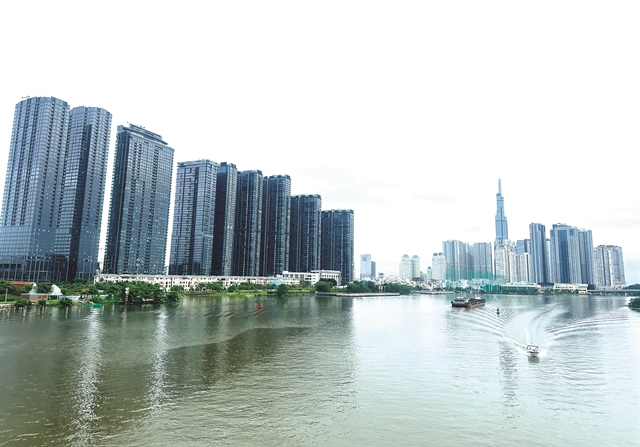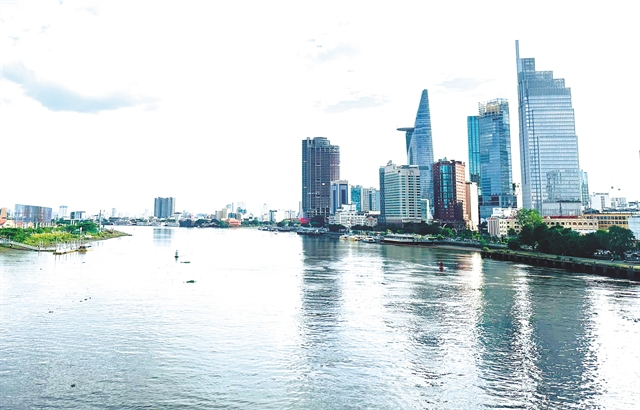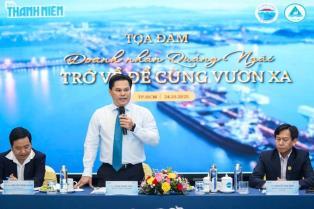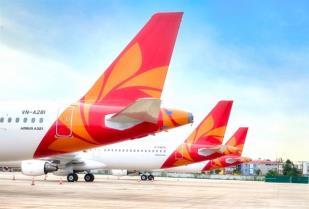Under the adjusted National Master Plan for the 2021–2030 period, with a vision toward 2050, the city will play a central role in driving regional and national growth, aiming to become a global financial hub and a nucleus for science, technology, and digital transformation.

As the country’s southern growth engine, HCM City is set to play a pivotal role in transforming the Southern Key Economic Region into one of Southeast Asia’s leading centres for economy, finance, commerce, and innovation.
Under the Government’s Resolution 306 issued on October 5 which adjusts the National Master Plan for the 2021–2030 period, with a vision toward 2050, the city will play a central role in driving regional and national growth, aiming to become a global financial hub and a nucleus for science, technology, and digital transformation.
The country’s overarching goal is to become a developing country with a modern industrial sector and high middle-income status by 2030.
The economy is targeted to grow at an average annual rate of over 8 per cent during 2021–2030, with per capita GDP expected to reach around US$8,500 by 2030.
The Southern Key Economic Region is being developed along National Highways 22, 13, 1, and 51, the Western North–South Expressway, and Ring Road 4, which passes through HCM City and the provinces of Đồng Nai and Tây Ninh.
HCM City serves as the primary growth pole of this vast development corridor.
In the post-2030 period, the Government plans to study the expansion of this regional hub to further enhance connectivity and competitiveness.
The region is tasked with spearheading the country’s transformation into a modern, innovation-driven economy.
It will lead in finance, services, healthcare, education, high-quality human resource development, science and technology, and the digital economy.
A major highlight is the establishment of an international financial centre in HCM City, envisioned as a leading global financial hub that will strengthen the country’s position in the global financial network and act as a catalyst for sustainable national growth.

Digital economy push
The resolution calls for the development of robust digital infrastructure and data systems to support national digital transformation.
This includes fostering a digital government, digital economy, and digital society, with the digital economy expected to contribute around 30 per cent of GDP by 2030.
Efforts will focus on developing an innovation ecosystem anchored in HCM City, promoting research, startups, and high-tech industries.
Strong development is planned for financial services, banking, science and technology, and logistics, ensuring the city remains at the forefront of global integration.
While HCM City leads the southern region, the resolution also outlines development orientations for other key growth hubs.
The northern hub, centred around Hà Nội, will focus on innovation, high-quality human resources, and the digital economy.
The central hub, led by Đà Nẵng, will drive development along the central coastal corridor.
The Mekong Delta hub, anchored by Cần Thơ, will strengthen connectivity with expressways and seaports to boost agricultural modernisation and logistics.
The north central coast hub, including Thanh Hóa, Nghệ An, and Hà Tĩnh, is set to become a national centre for refining, petrochemicals, and emerging high-tech industries such as semiconductors and AI.
Balanced regional growth
The resolution also sets out guidelines for developing the national urban-rural system, spatial distribution of key sectors, and national technical infrastructure, ensuring balanced and sustainable development across all regions.
Under the plan, the Southern Key Economic Region will encompass areas along National Highways 22, 13, 1, and 51, the Western North–South Expressway, and Ring Road 4, which passes through HCM City and the provinces of Đồng Nai and Tây Ninh, with HCM City positioned as the primary growth pole.
In the post-2030 period, studies will be conducted to expand the region’s scope.
The region is envisioned to lead the nation — and become one of Southeast Asia’s foremost centres — in the fields of economy, finance, commerce, services, healthcare, education and training, high-quality human resource development, science and technology, innovation, and digital transformation.
It will focus on building a robust innovation ecosystem, pioneering new growth models, and accelerating the development of a digital economy and digital society.
Strong development is also planned for financial services, banking, science, technology, and logistics.
An international financial centre will be developed in HCM City, aiming to make it a leading global financial hub that enhances Việt Nam’s standing in the global financial network while driving sustainable economic growth.
In addition to the southern hub, the resolution outlines the establishment of other key growth regions nationwide.
The Central Key Economic Region will include the coastal localities of Huế, Đà Nẵng, Quảng Ngãi, and Gia Lai, with Đà Nẵng serving as the main growth pole.
The Mekong Delta Key Economic Region will encompass Cần Thơ City and the provinces of An Giang, Vĩnh Long, and Đồng Tháp, with Cần Thơ as its core.
The resolution reaffirms the Government’s goal of leveraging regional strengths to promote balanced national development, while building modern infrastructure, fostering innovation, and positioning Việt Nam as a dynamic economy with a high middle-income status by 2030. VNS





